

By Linda Batchelor
Uncover the story of marine painter and illustrator Charles Pears. Pears moved to Cornwall in later life with his wife Dulce, who shared his passion for sailing.
10 July 1940 was ‘a lovely sunny day’ in Falmouth when, just after 2.30pm, the docks became the focus of attention from the German Luftwaffe, which was one of the first events in the Battle of Britain.
Three vessels, British Chancellor and Tascalusa, both British oil tankers, and the Greek cargo vessel Marie Chandris, loaded with cotton, were moored alongside the Northern arm of the docks. All three were bombed and set on fire and a Dutch salvage tug, Zwarte Zee, in the harbour was hit by splinters. There were casualties and 10 men were killed; four engineers on the British Chancellor and six civilian dock workers. There were no fatalities on the other vessels although the crews had to be rescued and about 240 dock workers had to be lifted from the burning wharf by a tug.
Falmouth Pilot Eggins on the Luminetta an oil tanker, near the docks, kept her clear of the fires, and Pilot Captain Charles Jackson cut the burning Marie Chandris adrift so the tugs could tow her away and beach her at Amsterdam Point off St Mawes where she burned for several days. Captain Jackson assisted by Commander Austin RNR, and two Royal Navy ratings then cut the British Chancellor adrift and the badly damaged vessel was towed to the North Bank and anchored clear of the docks. Of the four vessels damaged, three burned and sank and only the British Chancellor survived after undergoing extensive repairs.
The incident was recorded in a contemporary painting by the war artist Charles Pears, whose home was close to the action in St Mawes. Charles was an established marine painter, illustrator and lithographer, and an Official Naval War Artist in both World War I and World War II. Throughout his life he was also a committed and expert sailor with his own yacht Wanderer. In 1993 this painting of the bombing raid, which once hung in the Docks Office, was presented to Falmouth Art Gallery by A & P Falmouth Docks.
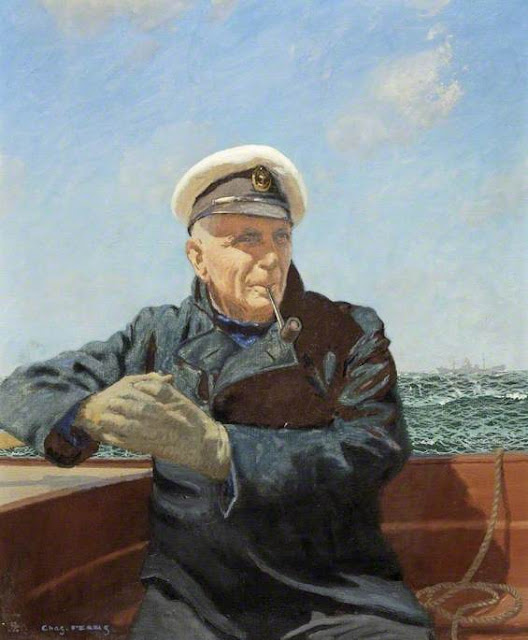
Charles Pears Self portrait 1944-1946. Russell-Cotes Art Gallery and Museum.
In 1939 Charles Pears and his wife Dulce had moved to Polvarth Studio in St Mawes, previously a boathouse built by the Lancaster family in 1931. Both he and his wife had a lifelong interest in sailing and prior to the War had been living on their respective yachts on the Percuil River but with wartime regulations this became a problem and they were given permission to live in the building. Charles was an established marine painter, illustrator and lithographer and an Official Naval War Artist in both World War I and World War II.

A Dazzled Merchantman in World War I. Charles Pears. IWM.
Charles was born in Pontefract in 1873 where his father George owned a tailors and hatters shop. Charles studied near home at East Hardwick and Pomfret College and encouraged by his father, a keen amateur painter, he began submitting sketches to the Yorkshireman, the weekly newspaper. He also won a competition for artists by The Studio, a fine and decorative arts magazine started in 1893.
These successes persuaded him to take up a career as an artist. By the turn of the 20th Century he was living in Chiswick near London with his wife Miriam, initially working in London as a commercial artist and illustrator although his preferred medium was oil painting.
He contributed illustrations for a variety of magazines and periodicals including The Illustrated London News, The Yellow Book, and Punch, and he received commissions to illustrate book editions such as a 1912 edition of The Adventures of Oliver Twist. Before the First World War he also established his reputation in the fine art world especially as a marine artist with nine works exhibited at the Royal Academy and numerous gallery exhibitions. He also became an eminent poster artist for amongst others the London Underground, the big four Railway Companies and the Empire Marketing Board.
During his career he was the first elected President of the Royal Society of Marine Artists (RSMA) in 1939 and he was also a member of The Royal Institute of Painters in Watercolours, the Royal Institute of Oil Painters, the Fine Art Society and the New English Art Club.
With the outbreak of the First World War and with his expertise as a marine painter he was appointed as the Official War Artist to the Admiralty and was commissioned into the Royal Marines. Again in the Second World War he was appointed as a War Artist to produce an historical record of aspects of the conflict and many of his paintings of the period are now part of the collections such as the Imperial War Museum, and the National Railway Museum.
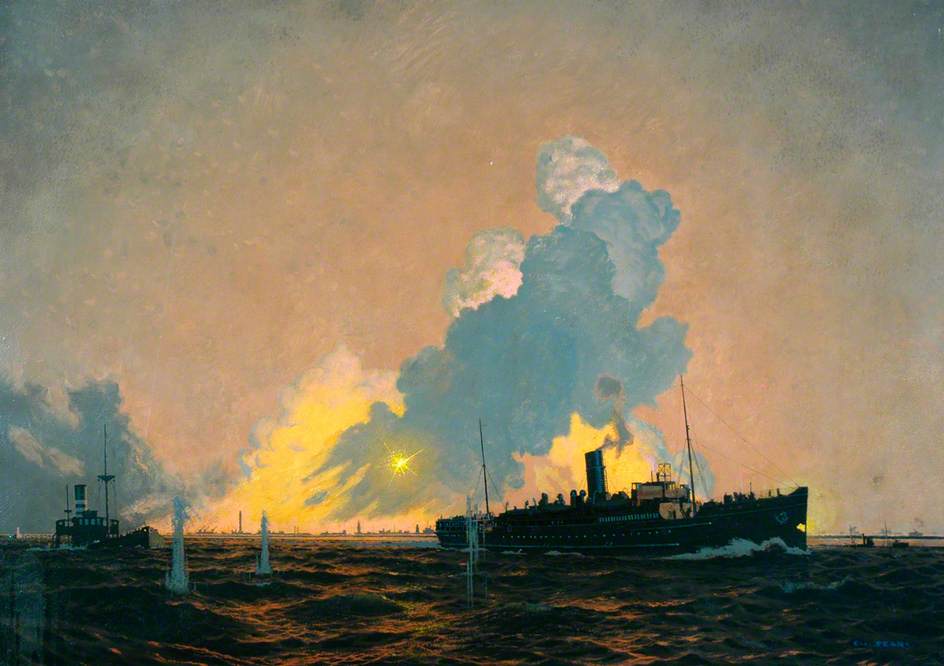
Great Western Railway Steamer St Helier Evacuating Troops Dunkirk 1 June 1940. Charles Pears.
National Railway Museum.
Sailing became a passion for Charles and added another dimension to his life. Although he was involved in various aspects of sailing his interest was in single-handed cruising. In his article The Single Hander in the Yachting and Boating Monthly written in 1907 he stated that ‘Single-handed cruising is the acme of sailing’. He owned several boats during his lifetime including the Dorothy, the Mave Rhoe, the Rose and his last purchase was the Wanderer.
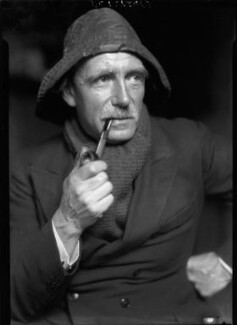
Charles Pears Photographed in 1926 by Howard Coster. National Portrait Gallery.
Much of his early cruising was on the east coast of England. Hole Haven, a creek to the west side of Canvey Island on the lower Thames, was a popular starting point for many of his sailing trips. He contributed articles about some of these trips to yachting publications such as an exploration of the Lower Thames and a voyage in the Mave Rhoe. In 1910 he published his first book From the Thames to the Seine and in 1914 he wrote From the Thames to the Netherlands describing not only the sailing but also places he visited, people he met all illustrated with his drawings.
The advent of World War I interrupted both his career, his sailing activities and his writing but Charles was able to renew these after the war. He purchased his yacht Wanderer in 1923 from the fledgling yacht brokerage of Walter Griffiths near Ipswich. He resumed his sailing and writing extending his cruising along the English coast especially around Devon and Cornwall. In 1931 he published South Coast Cruising from the Thames to Penzance.
This was the year in which his wife Miriam died. He married for a second time in 1933 to Dulce Griffiths, also known as Peter Gerard, the yachtswoman and writer, and later moved to live in semi-retirement in St Mawes.
Dulce Hazel Kennard was born in France in 1900 to Henry Kennard and his wife Annie. Throughout her childhood and adolescence her father was a professional soldier and the family were well travelled. At various times a governess is listed as part of the household but both Dulce’s elder brother, Terence and younger sister Tertia were pupils at Bedales School the progressive co-educational school in Hampshire. It is not clear, however, whether Dulce was also ever a pupil.
By the 1920s Dulce had harnessed her love of sailing and was working as reporter and journalist for the yachting press. It is indicative of how unusual this occupation was for a female writer at the time that she wrote under the name of Peter Gerard. During this time she acquired her yacht Juanita, a Falmouth Quay Punt built in 1896 by T Jackett of Falmouth. Dulce was the epitome of the emancipated 1920s woman with her bobbed hair, an unconventional career and a confident attitude to life.
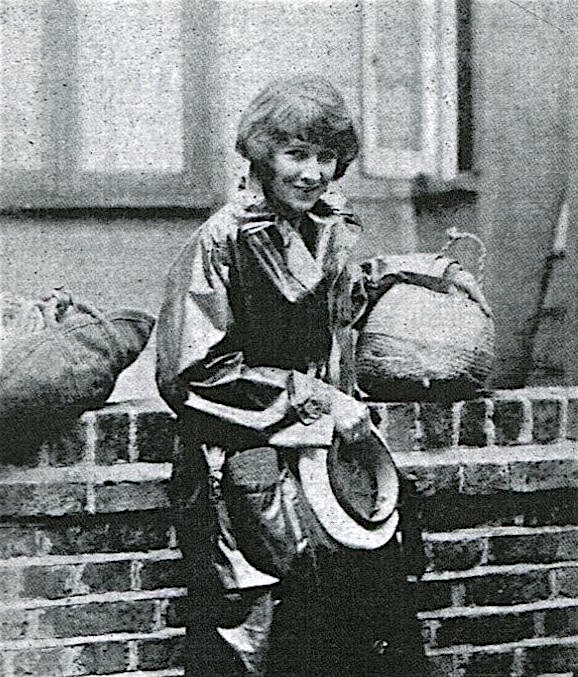
Dulce/ Peter ready for sailing.
While working as a sailing journalist she also met Maurice Griffiths who was making his name as a yachtsman and writer. His interest in sailing had developed as a young man in his home town of Ipswich. He spent time exploring the creeks and rivers of the Thames Estuary and the East Coast which later led to his writing one of the iconic of sailing books The Magic of the Swatchways. He started a small yacht brokerage and sold the Wanderer to Charles Pears in 1923. By 1927 he was the editor of Yachting Monthly, a post he held for the next forty years, and the same year he and Dulce were married.
Dulce and Maurice lived permanently aboard Afrin their thirty-four-foot pilot cutter at Walton on the Essex coast. Maurice travelled daily to the magazine offices in London whilst Dulce remained in Walton writing and giving sailing instruction but they both maintained their sailing activities. Sometimes they crewed together in races but individually Maurice liked to potter about the East Coast creeks while Dulce preferred open water sailing. Despite their mutual interest in sailing, for various reasons they grew apart, their marriage did not last, and eventually they divorced.
Charles and Dulce had known one another for some time. Although Charles was twenty years older than Dulce both were part of the sailing community around the coast of Essex and Suffolk. They both kept their boats at Heybridge Basin, near Maldon in Essex. They had clearly shared a love of sailing and a relationship had developed.
In 1933 they married in Kensington and they spent time working or sailing in a variety of locations including London and Heybridge and around the East and South Coast. Charles continued his work as an artist and Dulce was described as ‘an instructress in seamanship’ and ran a sailing school for female cadets. This involved taking two or three students sailing from Heybridge along the East and South coast as far as the Scillies.
By the late 1930s they were both in Cornwall living on their respective boats on the river near St Mawes. Initially Charles rented a studio at Polvarth boathouse but they moved into the studio on the start of war. The boathouse had its own private quay, a slipway and the foreshore offered direct water access. They remained there for many years and became familiar figures in St Mawes where Charles founded the St Mawes Art club in 1945 for both professional and amateur artists. Dulce wrote her autobiography covering the years up to 1962 Who Hath Desired the Sea.
They were also well known in the sailing community, especially around St Mawes and Falmouth. They both retained their own yachts, Wanderer and Juanita although they did not sail often together. Although they had a friendly rivalry, they were too competitive and did not get along with one another on board and so sailed separately.
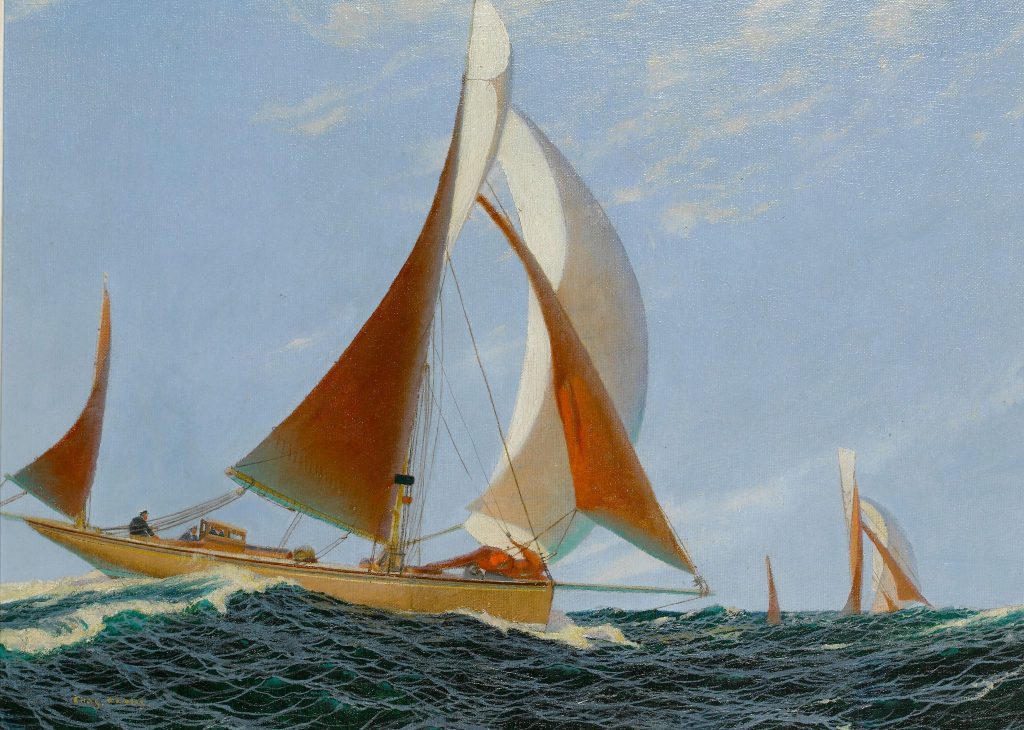
Charles at the wheel of Wanderer with Dulce ahead of him in Juanita. Charles Pears (1873 -1958).
Charles died in Truro in 1958 and Dulce remained in St Mawes until her death in 1980. Many years later Dulce’s yacht Juanita was found at Bawdsey in a sorry state by young yachting enthusiast Will Thomas of Ipswich. She was restored in time for the 2017 season and is no ling again no doubt in the spirit of Charles and Dulce.
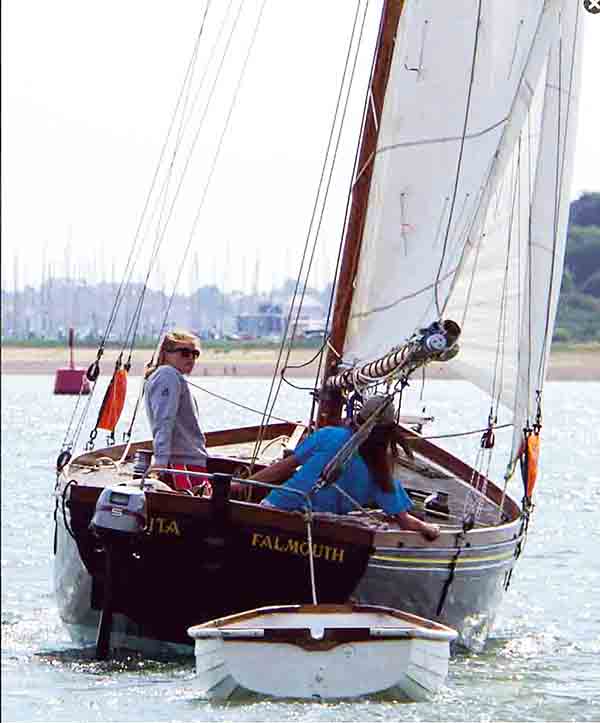
Juanita restored for sailing. Classic Boat.
The Bartlett Blog is written and produced by the volunteers who staff The Bartlett Maritime Research Centre and Library of National Maritime Museum Cornwall. This blog post was written by Linda Batchelor, a Bartlett Library volunteer.
The Bartlett Maritime Research Centre & Library holds a Collection of over 20,000 volumes and offers access to one of the finest collections of maritime reference books, periodicals and archival material. The Bartlett Blog reflects the diversity of material available in The Bartlett Library.

National Maritime
Museum Cornwall Trust
Discovery Quay
Falmouth Cornwall
TR11 3QY
View Map
See our opening hours
Tel: +44(0)1326 313388
Email: enquiries@nmmc.co.uk